
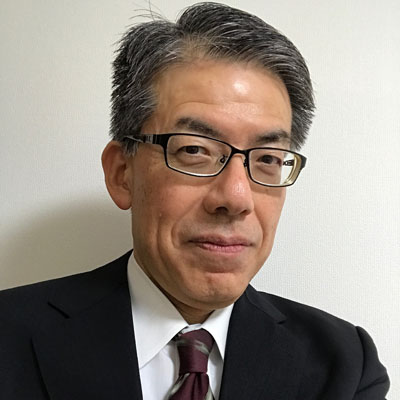 DTS INSIGHT CORPORATION has been started as a member of DTS group, merging with Yokogawa Digital Computer Corporation and ART System Co., Ltd. and embedded related business of DTS CORPORATION on April 1th, 2017.
DTS INSIGHT CORPORATION has been started as a member of DTS group, merging with Yokogawa Digital Computer Corporation and ART System Co., Ltd. and embedded related business of DTS CORPORATION on April 1th, 2017.
Our major business are,
– System development product in automotive/embedded field
– Hardware/Firmware development
– Measurement control system in healthcare field
– Commissioned development in various fields, etc.
DTS INSIGHT have supported customer’s business as above in each company’s strong field, and will achieve services for the world of IoT continued to evolve further in the future.
Kiyoshi Niwa joined Toshiba Corporation in 1982, and developed Logic LSI (ASIC) design technology. Joined VLSI Technology KK in 1990, as ASIC Design Engineer. Joined Nihon Synopsys KK in 1994, as FAE for Synthesis, DFT and Fault analysis etc. Joined ARM KK in 2002, as FAE and Technical Support for CPU Core and Peripheral IP. Joined DTS Insight Corporation in 2020, and is an FAE of agency activity for SiFive, now.
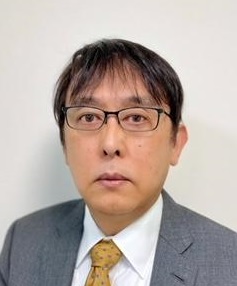
Esperanto Technologies: Esperanto Technologies develops high-performance, energy-efficient computing solutions for Artificial Intelligence / Machine Learning based on the open standard RISC-V instruction set architecture. For more information, please visit https://www.esperanto.ai/
Eiji Kasahara Eiji is a Sr. CPU Architect for Esperanto‘s SOC(Supercomputer on Chip). His recent RISC-V association’s achievements include Organizer and Program Committee, the planning of RISC-V related translation books, and 2017 and 2018 speaker. Eiji is also famous for his role as an architect of PlayStation3’s Cell Broadband Engine (CELL/BE). Eiji was responsible for development of CELL/B.E design, power-performance, semiconductor process technologies in 90nm, 65nm, and 45nm generation SOI process technologies to reduce cost and power as Deputy of STI(Sony-Toshiba-IBM) Design Center in Austin, Texas. Before joining Sony Corporation, Eiji developed NEC SX-5 supercomputer and NEC ACOS4 mainframe computers in Japan.
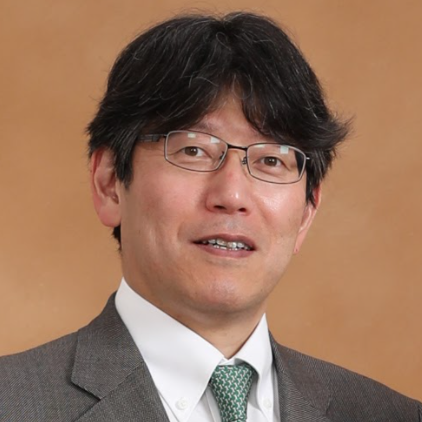
Makoto Ikeda received the BE, ME, and Ph.D. degrees in electrical engineering from the University of Tokyo, Tokyo, Japan, in 1991, 1993 and 1996, respectively. He joined the University of Tokyo as a research associate, in 1996, and now professor at d.lab, school of Engineering, the University of Tokyo. He is also the professor at department of Electrical Engineering and Information Systems, graduate school of engineering, the University of Tokyo, where he served as a department head in 2017. He stayed in Cambridge University as a visiting Researcher in 2001-2001. He has been involving the activities of VDEC to promote VLSI design educations and researches in Japanese academia. And now initiated “AI chip design project” for Japanese startups, supported by Ministry of Economy, Trade and Industry (METI) of Japan.
His research topics including hardware security, including crypto accelerator design, secure sensor design, smart image sensor for 3-D range finding, and time-domain circuits including asynchronous controlling and associate memories.

SiFive is the leading provider of market-ready processor core IP and silicon solutions based on the free and open RISC-V instruction set architecture. Led by a team of seasoned silicon executives and the RISC-V inventors, SiFive helps SoC designers reduce time-to-market and realize cost savings with customized, open-architecture processor cores, and democratizes access to optimized silicon by enabling system designers in all market verticals to build customized RISC-V based semiconductors. With 15 offices worldwide, SiFive has backing from Sutter Hill Ventures, Qualcomm Ventures, Spark Capital, Osage University Partners, Chengwei, Huami, SK Hynix, Intel Capital, and Western Digital.
Atsushi Ishii has over 10+ year experience as President of Axis Japan Co.Ltd., Verisity Design K.K. & Carbon Design Systems Japan K.K. He is currently the representative in Japan of SiFive,Inc..

DTS INSIGHT CORPORATION has been started as a member of DTS group, merging with Yokogawa Digital Computer Corporation and ART System Co., Ltd. and embedded related business of DTS CORPORATION on April 1th, 2017.
Our major business are,
– System development product in automotive/embedded field
– Hardware/Firmware development
– Measurement control system in healthcare field
– Commissioned development in various fields, etc.
DTS INSIGHT have supported customer’s business as above in each company’s strong field, and will achieve services for the world of IoT continued to evolve further in the future.
Yoshihito Kondo / DTS INSIGHT, Corp. LSI Design Service Div. / He has been working for Sony Corporation since 1990 and has been involved in the development of media processor. Engaged in CMOS image sensor development at Sony LSI Design Inc. from 2012. Joined DTS Insight Co., Ltd. in 2019 and is currently in charge of agency operations for SiFive.
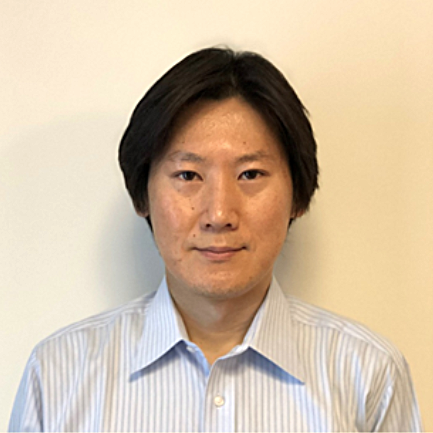
Synopsys, Inc. (Nasdaq: SNPS) is the Silicon to Software™ partner for innovative companies developing the electronic products and software applications we rely on every day. Synopsys has a long history of being a global leader in electronic design automation (EDA) and semiconductor IP and is also growing its leadership in software security and quality solutions. Whether you’re a system-on-chip (SoC) designer creating advanced semiconductors, or a software developer writing applications that require the highest security and quality, Synopsys has the solutions needed to deliver innovative, high-quality, secure products. Learn more at www.synopsys.com
Mitsuru Tomono received his Ph. D in 2007 from Nara Institute of Science and Technology. He has more than 5 years experiences as pre-sales application engineer of Synopsys processor solution for Synopsys ASIP Designer tool, ARC Processor family, and, especially, embedded vision processor for AI applications. He achieved many design requirements in collaboration with customers for automotive and embedded vision processing systems.
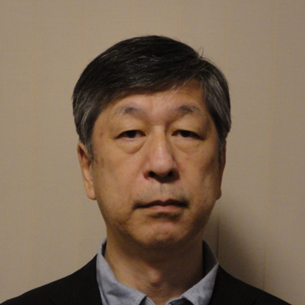 MIPS is a leading developer of highly scalable RISC processor IP for high-end automotive, computing and communications applications. With its deep engineering expertise built over 35 years and billions of MIPS-based chips shipped to-date, today the company is accelerating RISC-V innovation for a new era of heterogeneous processing.
MIPS is a leading developer of highly scalable RISC processor IP for high-end automotive, computing and communications applications. With its deep engineering expertise built over 35 years and billions of MIPS-based chips shipped to-date, today the company is accelerating RISC-V innovation for a new era of heterogeneous processing.
Michio Abe | MIPS LLC, Director, Sales & Solution, Japan / He joined NEC in 1985. He has been involved in the development of MIPS CPUs including the development of the original NEC’s MIPS CPUs (since 1991). Afterward, developing in-vehicle SoCs with MIPS and other cores architectures. He has been in charge of promotion and marketing of MIPS CPU at Japan since 2015 under MIPS, initially as part of Imagination Technologies and now as a stand-alone company.
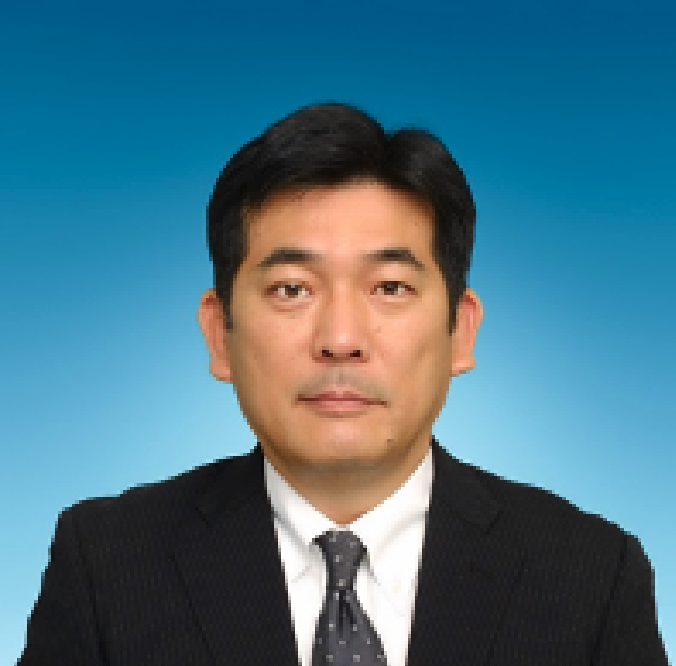
GigaDevice is a leading fabless company engaged in advanced memory technology and IC solutions. The company was founded in Silicon Valley I n 2004 and currently produces a wide range of SPI NOR Flash, SPI NAND Flash, sensors, PMIC and MCUs for use in embedded, consumer, and mobile communications applications with more than 1 billion units shipped every year. In 2019, GigaDevice launched the world’s first 32-bit RISC-V based general purpose and in 2020 the GD32VF103, RISC-V MCU, won the international award of hardware product of the year at the Embedded World 2020 in Nuremberg Germany.
Ken Kageyama is in charge of marketing the Japanese market for MCUs and flash memory at GigaDevice. He has been involved in the development, product planning, marketing and sales of semiconductor products such as MCUs, ASICs, IPs, dynamic reconfigurable processors and flash memories.
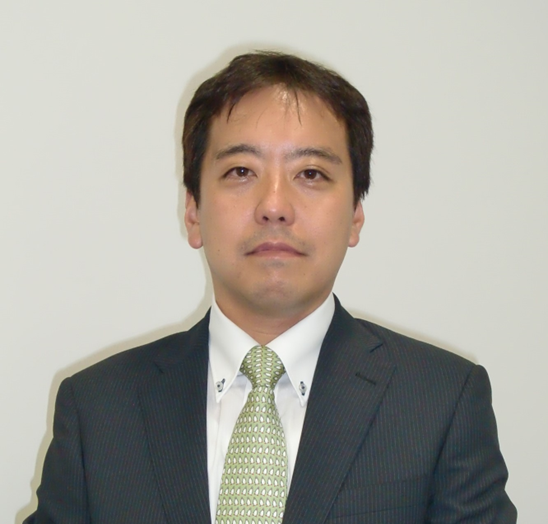
Efinix is an FPGA company, offering high-performance, high-density and lower power products featuring its disruptive Quantum Compute Fabric. Its scalable Titanium family is fabricated in 16nm for applications ranging from edge to data center. Soft RISC-V cores and Quantum Acceleration ensure optimum system performance and fast time to market.
Ikuo Nakanishi has 25 years of FPGA experience. Started at Altima as a FAE supporting ALTERA FPGAs and gained a lot of knowledge about FPGAs, Processors, DSPs, and high-speed interfaces, and then went on to work for Xilinx and Quick Logic, and is now the Japan representative for Efinix.

UNO Laboratories, Ltd. is collaborating with Hirosaki University on designing microarchitecture for embedded processors. We have successfully designed a highly energy efficient Single-Stage processor with RISC-V(RV32IM)using our own patent. And also, we are selling IP cores that apply the Single-Stage architecture and licensing the technology.
Masami Fukushima / UNO Laboratories / President & CEO. She founded UNO Laboratories, Ltd. in 2017 after working as an external lecturer for Renesas Electronics’ microcontroller seminars and became its President & CEO.
 Imperas is the leading provider of RISC-V processor models, hardware design verification solutions, and virtual prototypes for software simulation. Imperas promotes open-source models for CPU architectures, cores, system IP and reference models of processors ranging simple single core bare metal platforms to full heterogeneous multicore systems booting SMP Linux.
Imperas is the leading provider of RISC-V processor models, hardware design verification solutions, and virtual prototypes for software simulation. Imperas promotes open-source models for CPU architectures, cores, system IP and reference models of processors ranging simple single core bare metal platforms to full heterogeneous multicore systems booting SMP Linux.
eSOL Trinity Co., Ltd. was established in 2015 as a wholly owned subsidiary of eSOL Co., Ltd. Its three core businesses are Tools, Solutions, and Education, with a focus on RISC-V, ISO 26262, and Cyber Security.
Shuzo Tanaka / VP & Director Engineering Department , eSOL TRINITY Co.,Ltd. / I was working in the microcomputer technical support division at Fujitsu Semiconductor Division. After that, I established my own company and worked in sales and technical support of ISS and Co-simulator utilizing my knowledge of microcomputers. Currently, I mainly sell Imperas simulators.
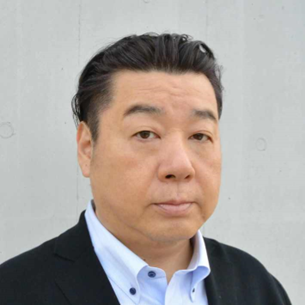 Codasip was founded in 2014 on a simple belief – that we could bring together the brilliance of microprocessor architects and software engineers and capture it in tools that made processor design simpler, faster, and less expensive and have the mission of democratizing processor design. More than 2 billion Codasip RISC-V processors have shipped.
Codasip was founded in 2014 on a simple belief – that we could bring together the brilliance of microprocessor architects and software engineers and capture it in tools that made processor design simpler, faster, and less expensive and have the mission of democratizing processor design. More than 2 billion Codasip RISC-V processors have shipped.
Takaaki Akashi / Japan Country Manager, Codasip / Successfully evangelized Verilog (IEEE std. 1364-1995) at Cadence at the start of the 1990s, and SystemVerilog (IEEE std. 1800-2005) and VMM, which is the archetype of UVM at Synopsys in the early 2000s, as a member of the JEITA (formerly EIAJ) standardization committee. Involved in semiconductor design in Japan for more than 25 years.

IAR Systems: We are dedicated to provide superior technology and services, enabling our customers to create the products of today and the innovations of tomorrow. Our journey started in 1983 in Uppsala, Sweden, with the engineer Anders Rundgren and his launch of the world’s first C compiler for the 8051 microcontroller architecture. Since then, our solutions have ensured quality, reliability and efficiency in the development of millions of products built on embedded systems all over world. Today, over 150,000 developers are using our software. Throughout the years, we have evolved and fine-tuned our technology to stay ahead of competition and always serve our customers in the best way we can. We have friends at all major suppliers in our industry, enabling great knowledge sharing and powerful technology innovation worldwide.
Shawn Prestridge has served as IAR System’s Senior Field Applications Engineer since 2008. Shawn has worked in the software industry since 1993 and prior to joining IAR Systems he held the position of Embedded Hardware/Software Engineer with Texas Instruments as well as doing Embedded Development as the owner of Ministry of Software.
Naoki Matsuda / Sales Account Manager, IAR System / He has been in charge of the automotive domain mainly in Japan. He has been in charge of domestic RISC-V business development.
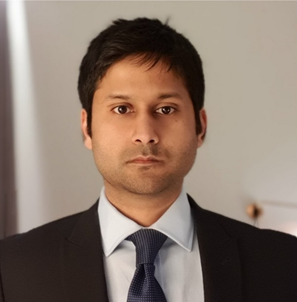 Imagination Technologies / Imagination is a company that creates silicon and software IP designed to give its customers a leading edge in global technology markets. Its GPU, CPU and AI technologies enable outstanding PPA, fast time-to-market and lower total cost of ownership. Products based on Imagination IP are used by billions of people is a company that creates silicon and software IP designed to give its customers a leading edge in global technology markets. Its GPU, CPU and AI technologies enable outstanding PPA, fast time-to-market and lower total cost of ownership. Products based on Imagination IP are used by billions of people.
Imagination Technologies / Imagination is a company that creates silicon and software IP designed to give its customers a leading edge in global technology markets. Its GPU, CPU and AI technologies enable outstanding PPA, fast time-to-market and lower total cost of ownership. Products based on Imagination IP are used by billions of people is a company that creates silicon and software IP designed to give its customers a leading edge in global technology markets. Its GPU, CPU and AI technologies enable outstanding PPA, fast time-to-market and lower total cost of ownership. Products based on Imagination IP are used by billions of people.
Naresh Menon is the Director of Product Management at Imagination Technologies, CPU defining the RISC-V CPU roadmap and the CPU direction of travel. He has over 16 years of experience with Arm building CPUs and working in their architecture group. Naresh Menon is currently engaging with customers regarding Imagination’s upcoming CPU products and helping build CPUs for different markets and applications which will also be feeding into the future Imagination heterogeneous compute solution.

RISC-V International is a global nonprofit association based in Switzerland. Founded in 2015, RISC-V brings together 2k+ members in more than 70 countries across industries and technical disciplines. RISC-V supports the free and open RISC instruction set architecture, developing additional extensions, tools, and resources paving the way for the next 50 years of computing design and innovation. RISC-V also connects the community and industry through academia, commercialization, and strategic leadership.
Calista Redmond is the CEO of RISC-V International with a mission to expand and engage RISC-V stakeholders, compel industry adoption, and increase visibility and opportunity for RISC-V within and beyond RISC-V International. Prior to RISC-V International, Calista held a variety of roles at IBM, including Vice President of IBM Z Ecosystem where she led strategic relationships across software vendors, system integrators, business partners, developer communities, and broader engagement across the industry. Focus areas included execution of commercialization strategies, technical and business support for partners, and matchmaker to opportunities across the IBM Z and LinuxOne community. Calista’s background includes building and leading strategic business models within IBM’s Systems Group through open source initiatives including OpenPOWER, OpenDaylight, and Open Mainframe Project. While at IBM, she also drove numerous acquisition and divestiture missions, and several strategic alliances. Prior to IBM, she was an entrepreneur in four successful start-ups in the IT industry. Calista holds degrees from the University of Michigan and Northwestern University.

Siemens EDA is a technology leader in software and hardware for electronic design automation (EDA). We offer proven software tools and industry-leading technology to address the challenges of design and system level scaling, delivering more predictable outcomes when transitioning to the next technology node. With a closed-loop digital twin managing the silicon lifecycle, data can move freely between design, manufacturing and the cloud for chips, boards and electrical and electronic systems.
Salaheddin Hetalani holds a M. Sc. in Embedded Computing Systems as a joint degree from the Technical University of Kaiserslautern and Southampton University and has more than 3-year experience in formal design verification. He is working at Siemens EDA as Field Application Engineer and focuses on application and development of RISC-V and bus protocol VIPs.
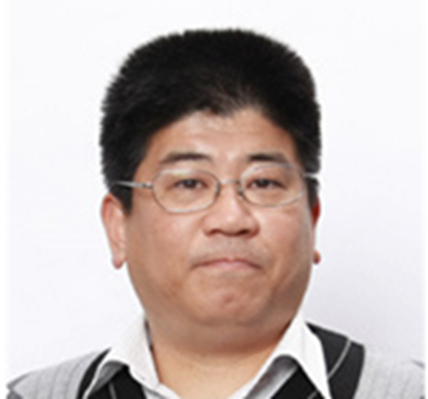
Siemens EDA is a technology leader in software and hardware for electronic design automation (EDA). We offer proven software tools and industry-leading technology to address the challenges of design and system level scaling, delivering more predictable outcomes when transitioning to the next technology node. With a closed-loop digital twin managing the silicon lifecycle, data can move freely between design, manufacturing and the cloud for chips, boards and electrical and electronic systems.
Kenichi Sakai joined Siemens EDA Japan KK. in 1999, and has been working in the various technology fields including functional verification consulting, High Level Synthesis (HLS) technology, functional safety solutions, SystemC virtualization technology and function verification technology.
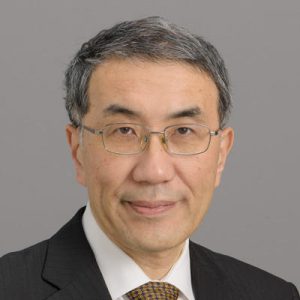
Keio University Faculty of Science and Technology, Department of Information and Computer Science, Amano laboratory is focused on new computer techniques for the post-Moore era. Research includes FPGA clusters, one-chip multiprocessors, dynamically reconfigurable computers, and novel interconnection networks. Real prototype systems with original LSI chips are developed to demonstrate research results.
Hideharu Amano is a professor of Department of information and computer science, Keio University. He is now developing a chip with embedded FPGA, switch and RISC-V. He received his Ph.D. in 1986 from Keio University. He was a visiting assistant professor at Stanford University from 1989-1990. Now, he is a professor at the Department of Information and Computer Science, Keio University. Hideharu Amano started research on computer architecture under the professor Hideo Aiso, Department of Electrical Engineering, and shared memory, cache, switch chip, multiprocessor, reconfigurable system, massively parallel system, router chip, multi-context device, power saving Reconfigurable accelerator, ultra-low power processor, consistent architecture research. It is known for its approach to developing and evaluating real systems to demonstrate ideas. In addition to translating Hennessy Patterson’s “quantitative approach”, he has held numerous academic committee positions and positions.
 National Institute of Infectious Diseases / The Institute aims at carrying out extensive and original research projects on a variety of contagious diseases from the standpoint of preventive medicine, improving human health and welfare by suppressing infectious diseases, and clarifying and supporting the scientific background of health and medical administration of the government.
National Institute of Infectious Diseases / The Institute aims at carrying out extensive and original research projects on a variety of contagious diseases from the standpoint of preventive medicine, improving human health and welfare by suppressing infectious diseases, and clarifying and supporting the scientific background of health and medical administration of the government.
Mitsugu Suzuki as Chief, Dept. of Quality Assurance and Radiological Protection, National Institute of Infectious Diseases (NIID).
Apr. 1995: Research Assoc. of Univ. of Electro Communications
Apr. 2008: Assoc. Professor of Shimane University
Sep. 2021: Chief of National Institute of Infectious Diseases
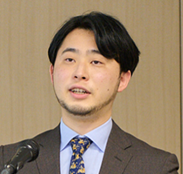 SIGNATE® is the largest data science platform in Japan. Its main functions are SIGNATE Competition, where users can tackle real-world data analysis challenges, and SIGNATE Cloud, a practical online education program using real-world problems and data. We provide opportunities for growth and success in a way that suits each user.
SIGNATE® is the largest data science platform in Japan. Its main functions are SIGNATE Competition, where users can tackle real-world data analysis challenges, and SIGNATE Cloud, a practical online education program using real-world problems and data. We provide opportunities for growth and success in a way that suits each user.
Atsuhiro Nishi / SIGNATE Inc., Data Scientist / After working as a system engineer and machine learning engineer at a system development company for financial institutions and a start-up company, I joined SIGNATE in 2019. In addition to managing AI development competitions, I have planned new projects and worked on data analysis projects in multiple industries.
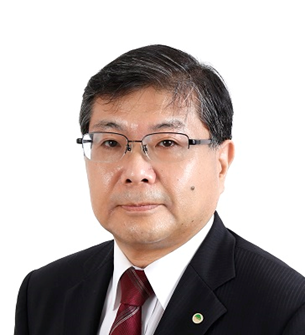 The Japan Embedded Systems Technology Association (JASA) conducts research, promotion, dissemination, and enlightenment of applied technologies in embedded system technology, including embedded software. An organization that aims to contribute to the sound development of Japanese industry and the improvement of people’s lives by improving the sophistication and efficiency of Japan. The RISC-V WG belongs to the Hardware Committee of the Technical Headquarters and aims to popularize RISC-V in embedded systems.
The Japan Embedded Systems Technology Association (JASA) conducts research, promotion, dissemination, and enlightenment of applied technologies in embedded system technology, including embedded software. An organization that aims to contribute to the sound development of Japanese industry and the improvement of people’s lives by improving the sophistication and efficiency of Japan. The RISC-V WG belongs to the Hardware Committee of the Technical Headquarters and aims to popularize RISC-V in embedded systems.
Tomohisa Kohiyama is a master’s degree graduate of the Graduate School of Science and Engineering, Tokyo University of Science. P.E.Jp (Electrical and Electronics, Information Engineering, Engineering Management). He joined Hitachi, Ltd. Microelectronics Products Development Laboratory in 1984. After working as the research manager of the Systems Development Laboratory, launching a company-wide thin client system as a Corporate Senior Staff at the head office. He engaged in the development of new wireless-related businesses. Currently, he is working on the DX conversion of the site as the Chief Engineer of Hitachi Industrial Equipment Systems Co., Ltd. He is the chief of JASA RISC-V WG. IEEE WCP, IPSJ CITP. Chip collector such as CPU and peripherals.
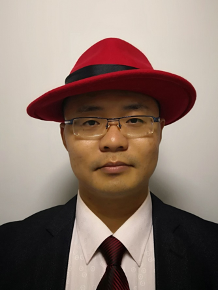
Red Hat, Inc. is the world’s leading provider of enterprise open source solutions, using a community-powered approach to deliver high-performing Linux, cloud, container, and Kubernetes technologies. Red Hat helps customers standardize across environments, develop cloud-native applications, and integrate, automate, secure, and manage complex environments with award-winning support, training, and consulting services.
Wei Fu is a Linux kernel/distro developer with Embedded/Enterprise experience on Linux kernel/driver ,BSP, system porting, CI-loop, Koji system and testing. Also have some experience on Firmware (U-boot/arm-TF/UEFI/ACPI/GRUB). Currently studying Linux distro,like Fedora/RHEL/CentOS on RISC-V, and now focusing on promoting RISC-V to Fedora Primary Architectures.
 Codasip was founded in 2014 on a simple belief – that we could bring together the brilliance of microprocessor architects and software engineers and capture it in tools that made processor design simpler, faster, and less expensive and have the mission of democratizing processor design. More than 2 billion Codasip RISC-V processors have shipped.
Codasip was founded in 2014 on a simple belief – that we could bring together the brilliance of microprocessor architects and software engineers and capture it in tools that made processor design simpler, faster, and less expensive and have the mission of democratizing processor design. More than 2 billion Codasip RISC-V processors have shipped.
Keith Graham | Head of University, Codasip / My experience spans architectural and design of Floating-Point accelerators, Memory Management Units, caches, and workstations to selling semiconductors to creating and teaching Computer Architecture and Embedded System courses at the undergraduate and graduate level. I am now working to prepare the people and advance technology to solve tomorrow’s technological challenges.
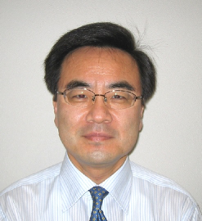
AI Chip Design Center (AIDC) is a NEDO project jointly implemented by AIST and the University of Tokyo. It provides LSI design environments such as EDA tools and logic emulators, AI chip design flows, and SoC platforms to small and medium-sized venture companies to accelerate the development of AI chips in Japan. We are proceeding with the development of this center on the Asano campus of the University of Tokyo, and have started trial operation in October 2019.
Kunio Uchiyama, Invited Senior Researcher of AIST in Japan, is currently the head of the AI chip Design Center which is operated as a NEDO project in Japan. He had worked for the Central Research Laboratory of Hitachi since 1978 and served as Corporate Officer and Chief Scientist. He is a Fellow of IEEE and IEICE. He has been a member of Board of Governors of the IEEE Computer Society since 2016.

Google believes that open source is good for everyone. By being open and freely available, it enables and encourages collaboration and the development of technology.
Tim ‘mithro’ Ansell is a software engineer at Google and has been developing open source software for 20+ years. Tim has recently started trying to shake things up in the hardware accelerator development ecosystem by removing roadblocks to having a completely open ecosystem. In 2020 he worked with SkyWater Foundry, a domestic U.S. manufacturer of integrated circuits, to release the world’s first fully open source, manufacturable PDK for their 130nm process node and is funding a free shuttle program for open source designs. He has also contributed to projects in the open EDA ecosystem like OpenROAD, OpenRAM, Magic and many others.
 Efabless corporation is an open innovation, hardware creation platform for “smart” products. Our community delivers the customized integrated electronics required for semiconductor and hardware system innovators to turn their product visions into a marketable reality. Our mission is to democratize the process of electronics product creation, making it accessible to all who want to participate.
Efabless corporation is an open innovation, hardware creation platform for “smart” products. Our community delivers the customized integrated electronics required for semiconductor and hardware system innovators to turn their product visions into a marketable reality. Our mission is to democratize the process of electronics product creation, making it accessible to all who want to participate.
Mohamed Kassem is the CTO and Co-Founder of efabless.com, the first semiconductor company applying open community innovation to all aspects of product development. Prior to launching efabless in 2014, Mohamed held several technical and global leadership positions within Texas Instruments’ Wireless Business Unit. He joined TI in 2000 at the beginning of the digital telephony revolution fueled by the unprecedented integration of major phone functions on a single SoC. He led the first development of 45nm, 28nm analog & mixed-signal IP functions for wireless applications processors.
Mohamed holds a Masters degree in Electrical Engineering from the University of Waterloo, Ontario, Canada.
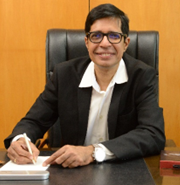
Indian Institute of Technology Madras (IIT M) is known for its excellence in technical education, basic and applied research, innovation, entrepreneur ship and industrial consultancy. The Institute is proud to bear the laureate of being No.1 engineering university in India.IIT Madras has been given the title of institute of Eminence.
Kamakoti Veezhinathan received his M.S. and Ph.D. degrees in Computer Science and Engineering from IIT Madras. He joined the faculty of IIT Madras in 2001 and took over as its Director in January 2022. He specializes in the area of Computer Architecture, Information Security and VLSI Design. He heads the Microprocessor Development Program and the Information Security Education and Awareness Program at IIT Madras funded by the Ministry of Electronics and Information Technology, Government of India. He is member of the National Security Advisory Board. He was also the Chairman of the Artificial Intelligence Task Force constituted by the Ministry of Commerce and Industry, Government of India. At IIT Madras he has served as the Chairman, JEE and as Associate Dean, Industrial Consultancy and Sponsored Research. He has over 150 publications in International Journals and Conferences, guided many research scholars for their PhD and Master of Science (By research) program. He has coordinated and successfully delivered close to 50 projects from Industry and Government R&D establishments. He serves in the Technology committees of the National Stock Exchange and Reserve Bank of India. Dr. Kamakoti is the recipient of DRDO Academic Excellence Award, Indian Electronics and Semiconductor Association Techno Visionary Award, ‘Abdul Kalam Technology Innovation National Fellowship’, ACCS Life-time Achievement Award, IBM Faculty Award and VASVIK Industrial Research award.
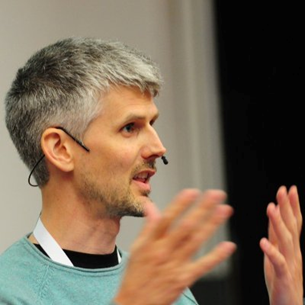 Matt Venn | ZeroToASIC / Matt Venn has been working with the open source ASIC tools for the last 18 months. In this time he has made his first chips, and via his course helped hundreds of people to learn the tools and submit their own ASIC designs.
Matt Venn | ZeroToASIC / Matt Venn has been working with the open source ASIC tools for the last 18 months. In this time he has made his first chips, and via his course helped hundreds of people to learn the tools and submit their own ASIC designs.
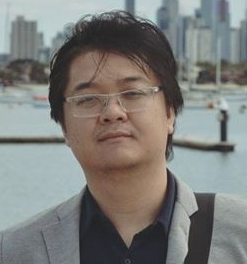 The University of Electro-Communications (UEC) is a national university in the city of Chōfu, Tokyo, Japan. It was founded in 1918 by the Wireless Association and later transferred to the Ministry of Communications in 1942. Following the transfer, it was established as a national university in 1949. Since 2004, the university has been run by the National University Corporation. The University of Electro-Communications specializes in the disciplines of computer science, the physical sciences, engineering, and technology.
The University of Electro-Communications (UEC) is a national university in the city of Chōfu, Tokyo, Japan. It was founded in 1918 by the Wireless Association and later transferred to the Ministry of Communications in 1942. Following the transfer, it was established as a national university in 1949. Since 2004, the university has been run by the National University Corporation. The University of Electro-Communications specializes in the disciplines of computer science, the physical sciences, engineering, and technology.
HOANG TRONG THUC received a B.Sc. degree and an M.S. degree in Electronic Engineering from the University of Science (HCMUS), Hochiminh city, Vietnam, in 2012 and 2017, respectively. In 2022, he graduated from the University of Electro-Communications (UEC), Tokyo, Japan, with a Ph.D. degree in Engineering. From 2012 to 2017, he was a lecturer assistant at HCMUS. From 2019 to 2020, he was a research assistant at UEC. From 2019 to 2022, he was a research assistant at the Cyber-Physical Security Research Center (CPSEC), National Institute of Advanced Industrial Science and Technology (AIST), Tokyo, Japan. Since April of 2022, he has been an assistant professor at the Department of Computer and Network Engineering, UEC, Tokyo, Japan. His research interest mainly focuses on digital signal processing, computer architecture, cyber-security, and ultra-low power system-on-a-chip.
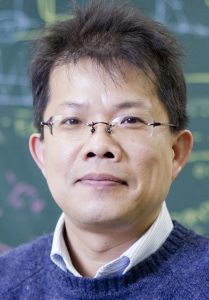
The University of Electro-Communications (UEC) is a national university in the city of Chōfu, Tokyo, Japan. It was founded in 1918 by the Wireless Association and later transferred to the Ministry of Communications in 1942. Following the transfer, it was established as a national university in 1949. Since 2004, the university has been run by the National University Corporation. The University of Electro-Communications specializes in the disciplines of computer science, the physical sciences, engineering, and technology.
Cong-Kha Pham is a professor at the University of Electro-Communications is studying hardware system design implementation by FPGA and integrated circuits Recent projects include research on energy harvest power supply and low-power data-centric sensor network system utilizing it, development of long distance transmission / miniaturization equipment of sensor network by low power wireless, super low-voltage device project, research on memory-based information detection system, hardware implementation of hardware system by FPGA and integrated circuit, etc. Professor Pham is teaching many undergraduate and postgraduate students and has received numerous award for dissertation.
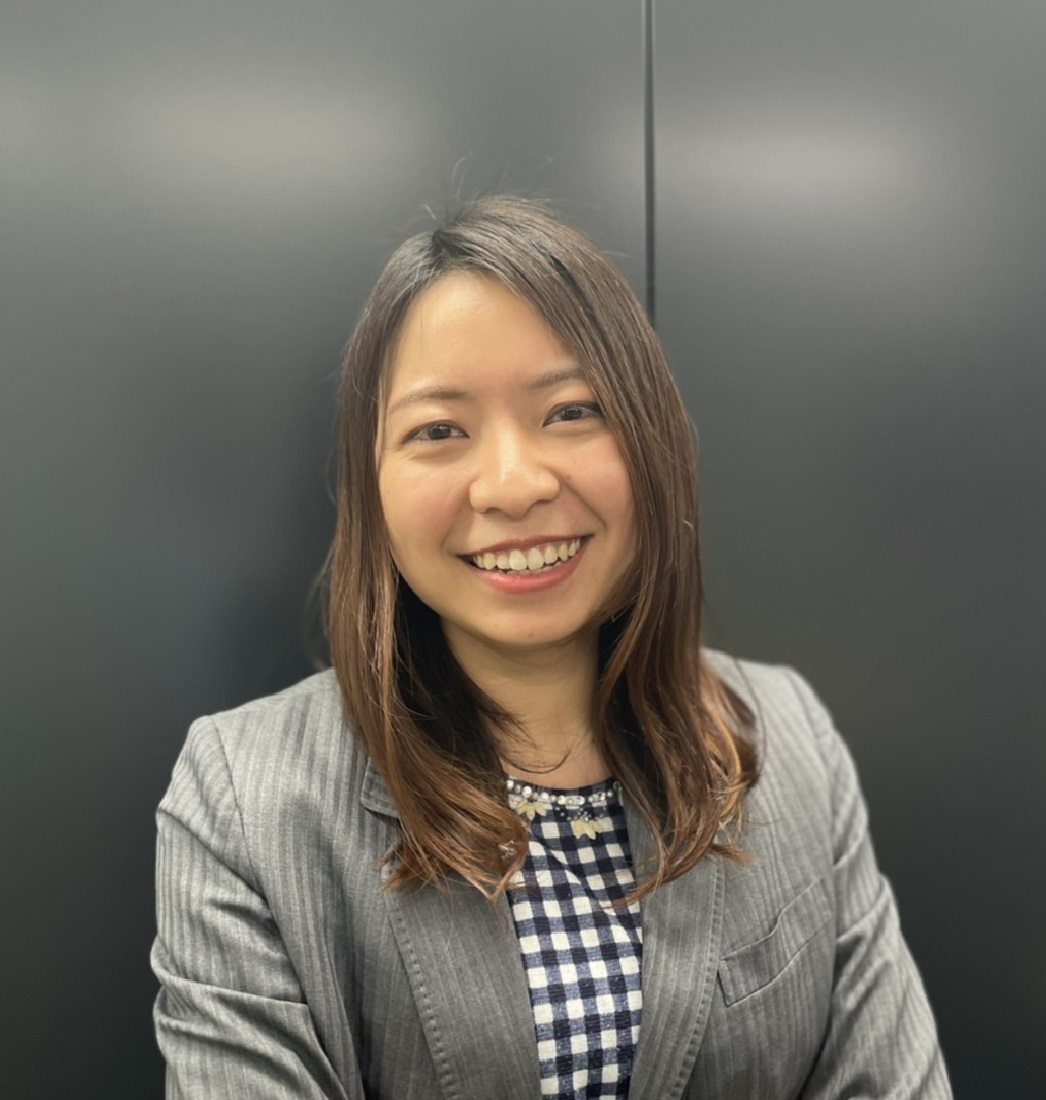 Ministry of Economy, Trade and Industry ( METI )
Ministry of Economy, Trade and Industry ( METI )
METI’s Mission; Realization of growth and development of the Japanese economy
Nozomi Nihei | Assistant Director, IT Industry Division Commerce and Information Policy Bureau, Ministry of Economy, Trade and Industry / Joined to METI in 2017. I have worked in the earthquake recovery sector, the renewable energy sector, and the manufacturing sector. And have been in current semiconductor sector since 2021.
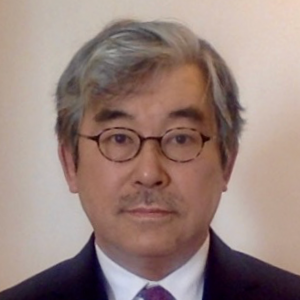
SH Consulting Group (Software Hardware Consulting Group) is a company that supports RISC-V software development and hardware development. We are developing AWS FreeRTOS WiFi client using RISC-V, AI software framework on RISC-V Linux, etc.
Shumpei Kawasaki co-founded SH Consulting in 2013. He specialized in the field of security for RISC-V FPGAs / SoCs. In 1990s, he co-developed CPUs and chipsets for Sega Saturn and Dreamcast video games. ARM adopted his “16-bit fixed-length instruction” invention for their monumentally successful “ARM7TDMI” and “ARM9TDMI.” In 2000s Shumpei led a development of a minimal operating system for Root of Trust chips used in network routers, 2-5G mobile handsets, and secure tokens in US.
 Google believes that open source is good for everyone. By being open and freely available, it enables and encourages collaboration and the development of technology.
Google believes that open source is good for everyone. By being open and freely available, it enables and encourages collaboration and the development of technology.
Johan Euphrosine (proppy) | He is a Developer Relations Engineer at Google based in Tokyo focusing on improving Hardware Toolchains developer experience.
 Siemens EDA is a technology leader in software and hardware for electronic design automation (EDA). We offer proven software tools and industry-leading technology to address the challenges of design and system level scaling, delivering more predictable outcomes when transitioning to the next technology node. With a closed-loop digital twin managing the silicon lifecycle, data can move freely between design, manufacturing and the cloud for chips, boards and electrical and electronic systems.
Siemens EDA is a technology leader in software and hardware for electronic design automation (EDA). We offer proven software tools and industry-leading technology to address the challenges of design and system level scaling, delivering more predictable outcomes when transitioning to the next technology node. With a closed-loop digital twin managing the silicon lifecycle, data can move freely between design, manufacturing and the cloud for chips, boards and electrical and electronic systems.
Yuri Ellison has worked in channel marketing and marketing communications for embedded software solutions, including the Nucleus RTOS and related middleware and development tools, and is currently the Marketing Program Manager at Siemens EDA, where she is responsible for marketing activities for entire EDA products in Japan.
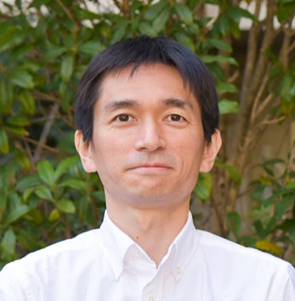
Efinix is an FPGA company, offering high-performance, high-density and lower power products featuring its disruptive Quantum Compute Fabric. Its scalable Titanium family is fabricated in 16nm for applications ranging from edge to data center. Soft RISC-V cores and Quantum Acceleration ensure optimum system performance and fast time to market.
Daisuke Sakurada is a skilled engineer who acquired hardware and software knowledge including FPGAs at a broadcasting and video related company, then worked as a consultant before becoming an FAE at Efinix.
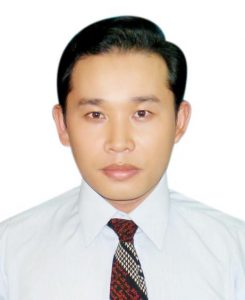
SH Consulting Group (SHC) has engineers in US, Vietnam and in Japan specialized in providing stability to RTOS, device drivers, and wireless connectivities for MCUs such as H8s, SHs, ARMs and RISC-Vs. It has been integrating OSes such as QNX, .NETMF, Linux, and Windows for MCUs and wireless solutions such as Lora, WiFi and Bluetooth for many years. They worked on Windows, Android and iOS platforms. In recent years SHC engineers enabled FreeRTOS for large semiconductor companies on ARM platforms and direct this effort to RISC-Vs.
Hoan Huynh is a Senior Software Engineer at SHC Vietnam. Graduated from Ho Chi Minh Polytechnic University in Electrical-Electronic major. Hoan has more than 20 years in microprocessor and digital systems design. He is familiar with almost embedded systems such linux, QNX, FreeRTOS.

